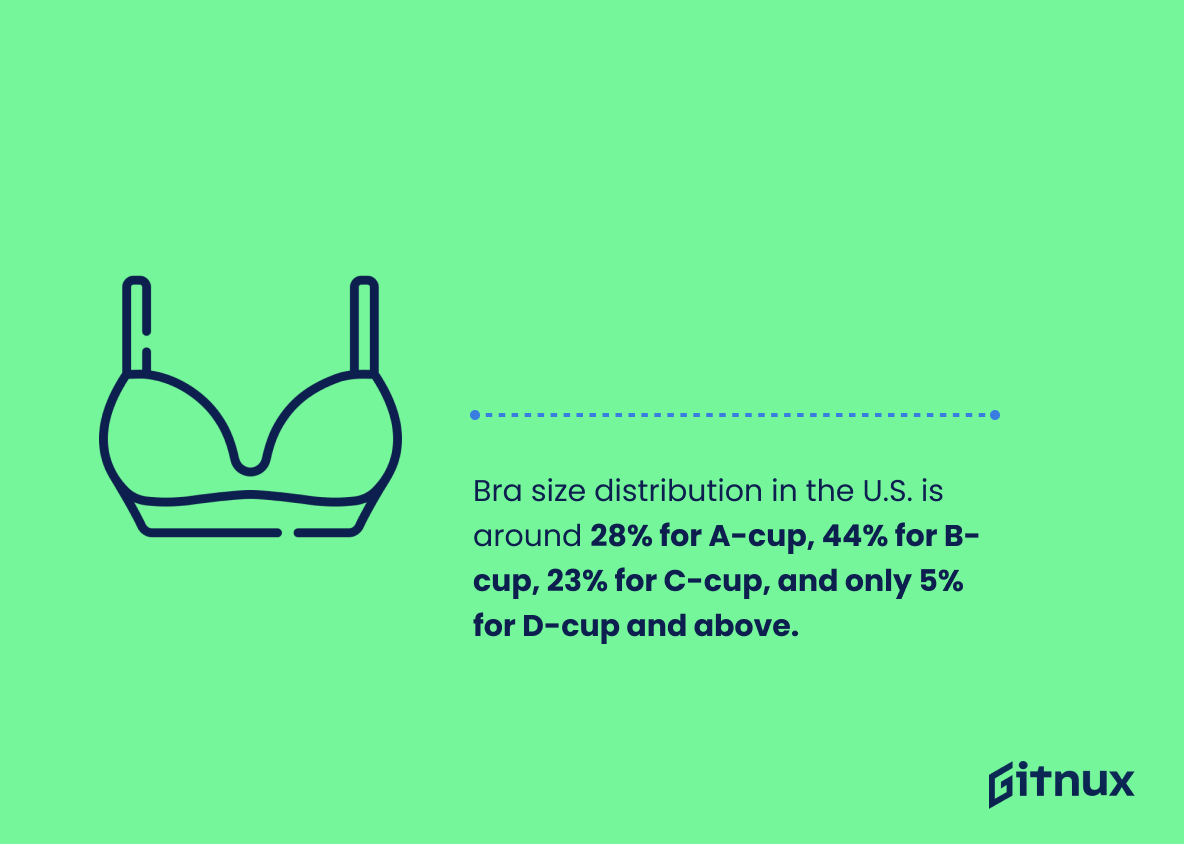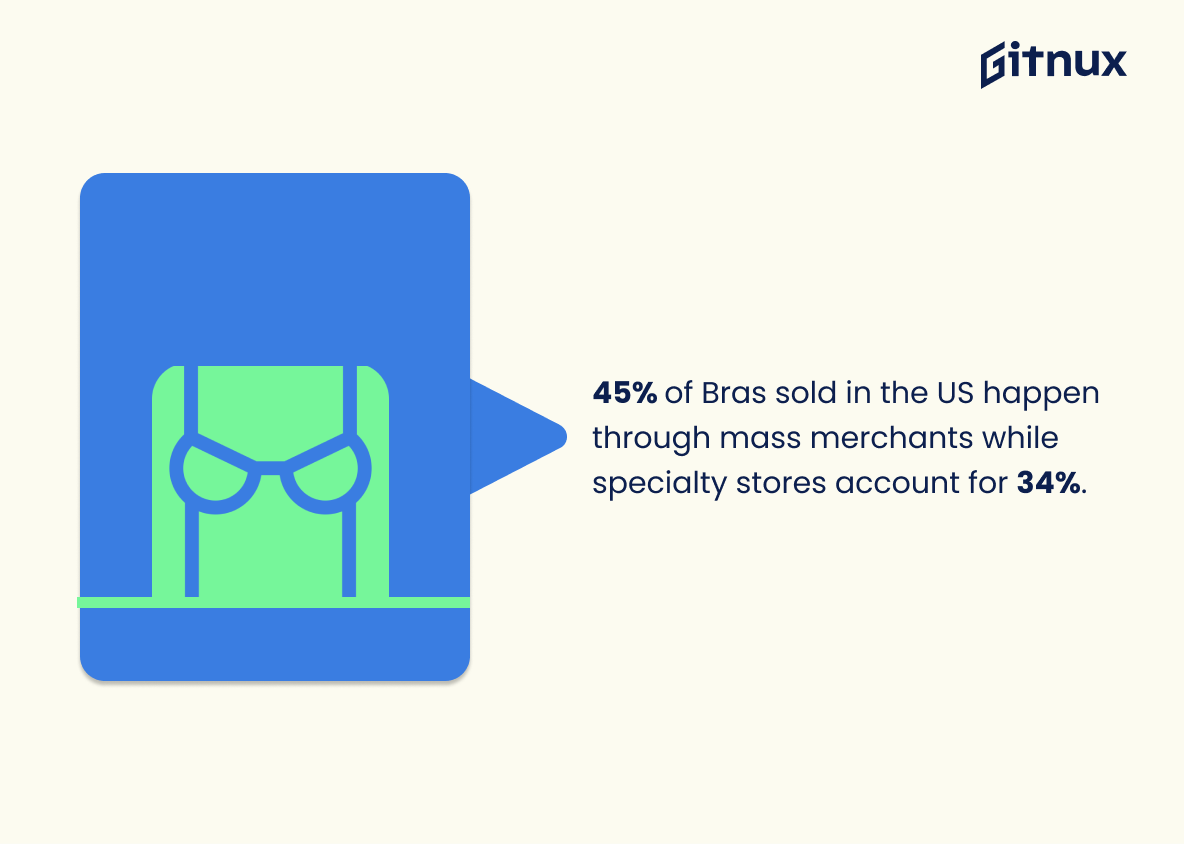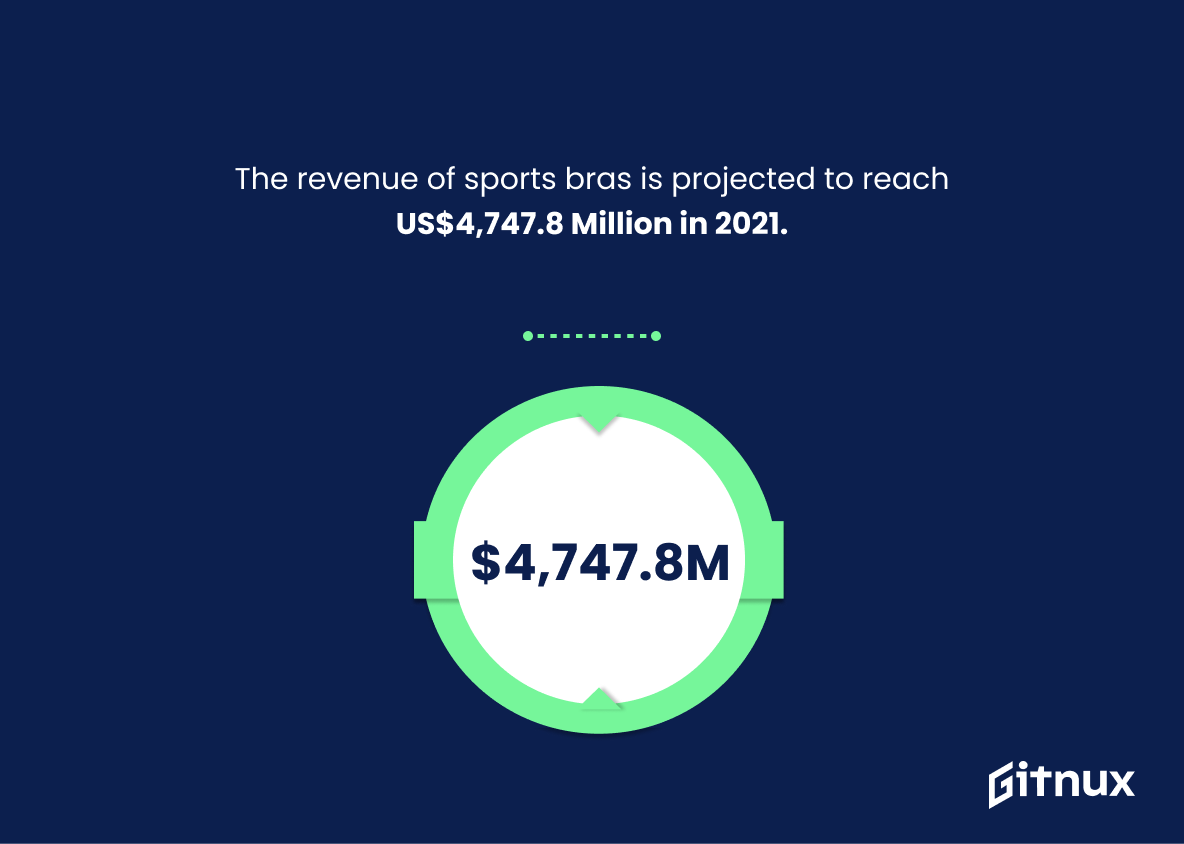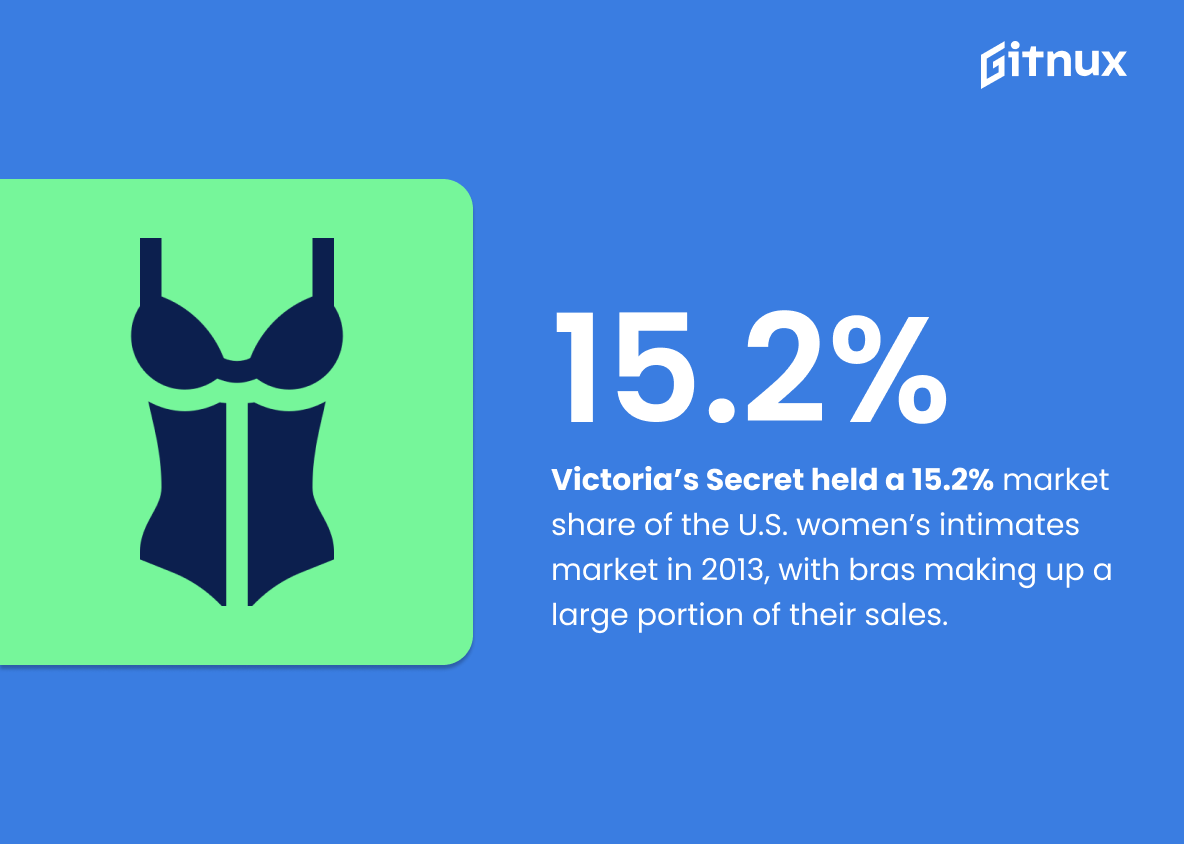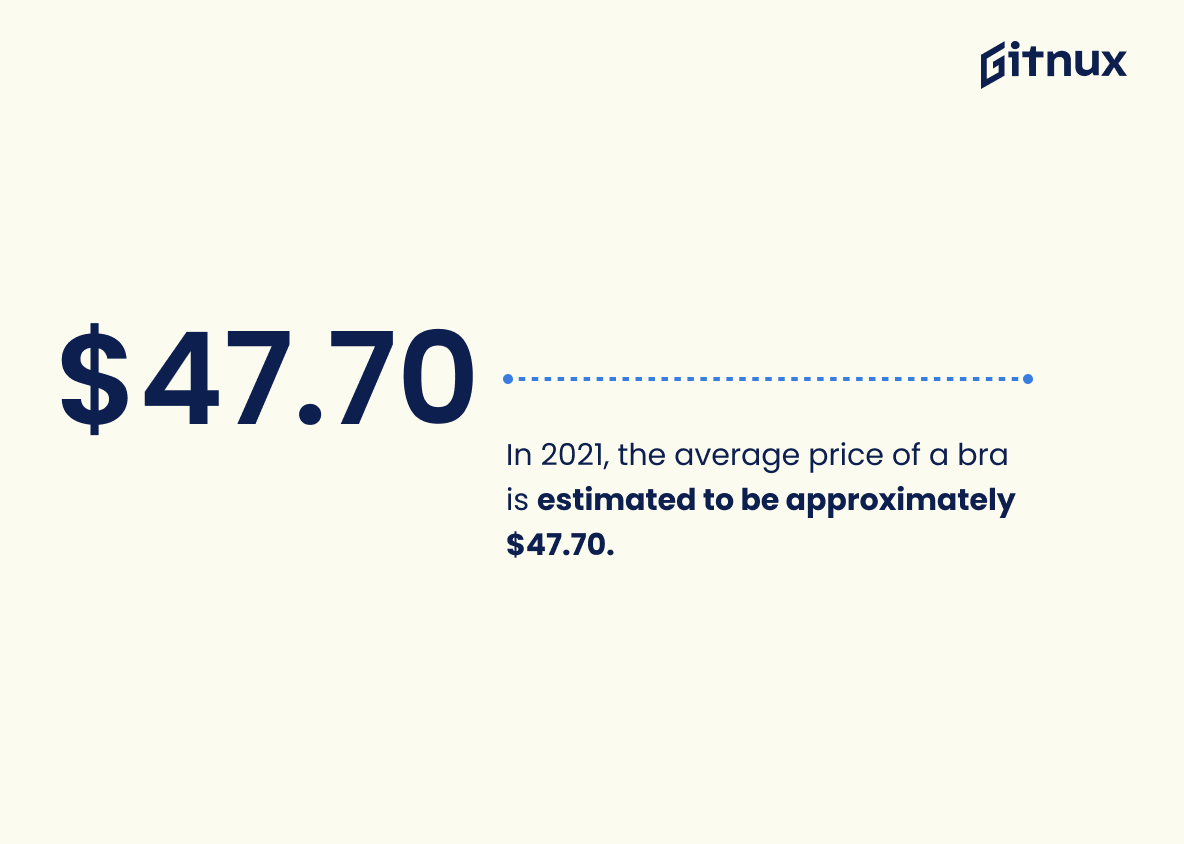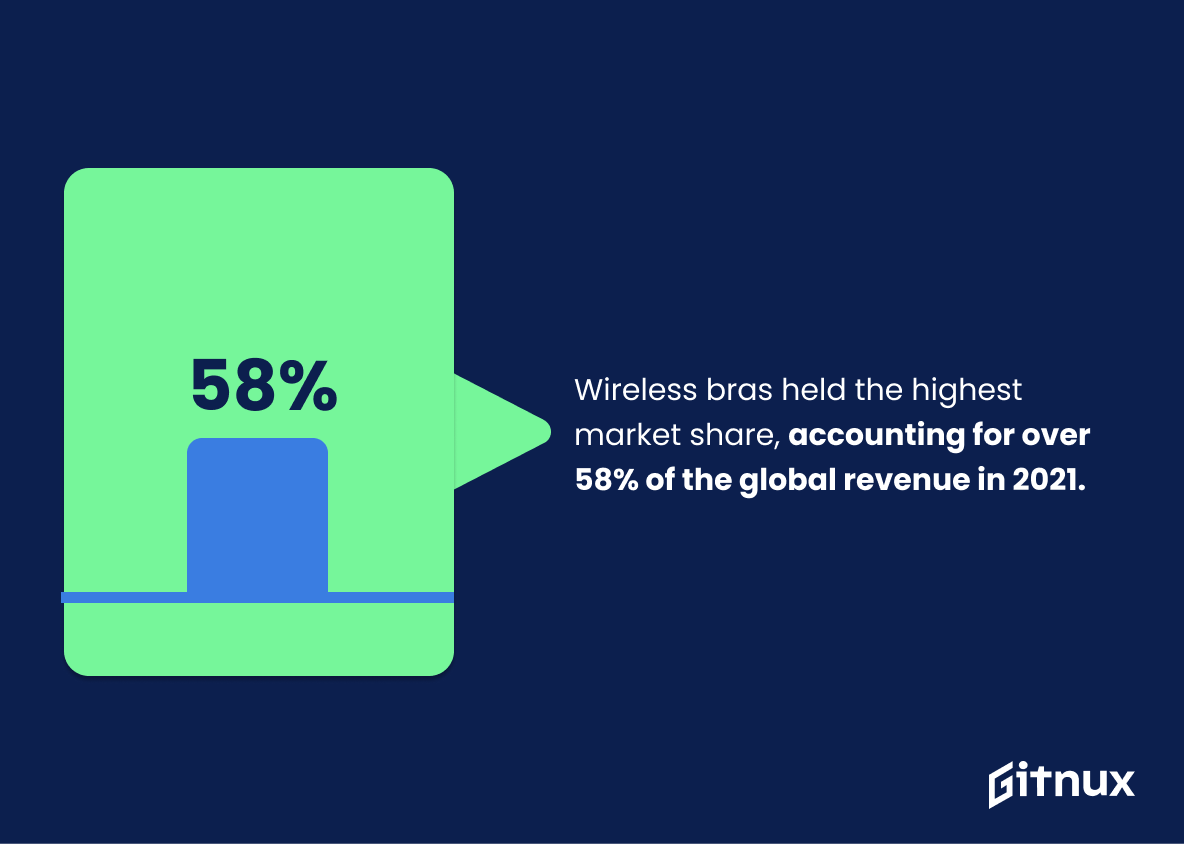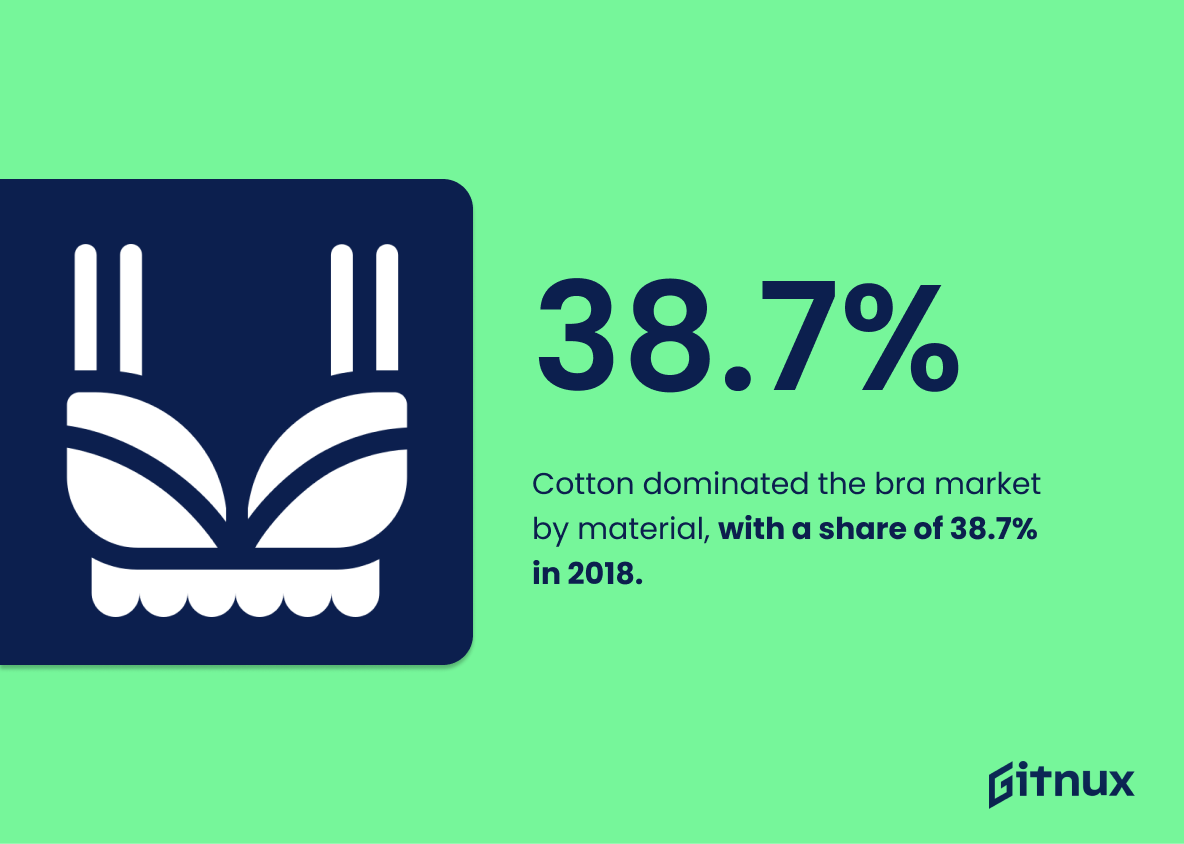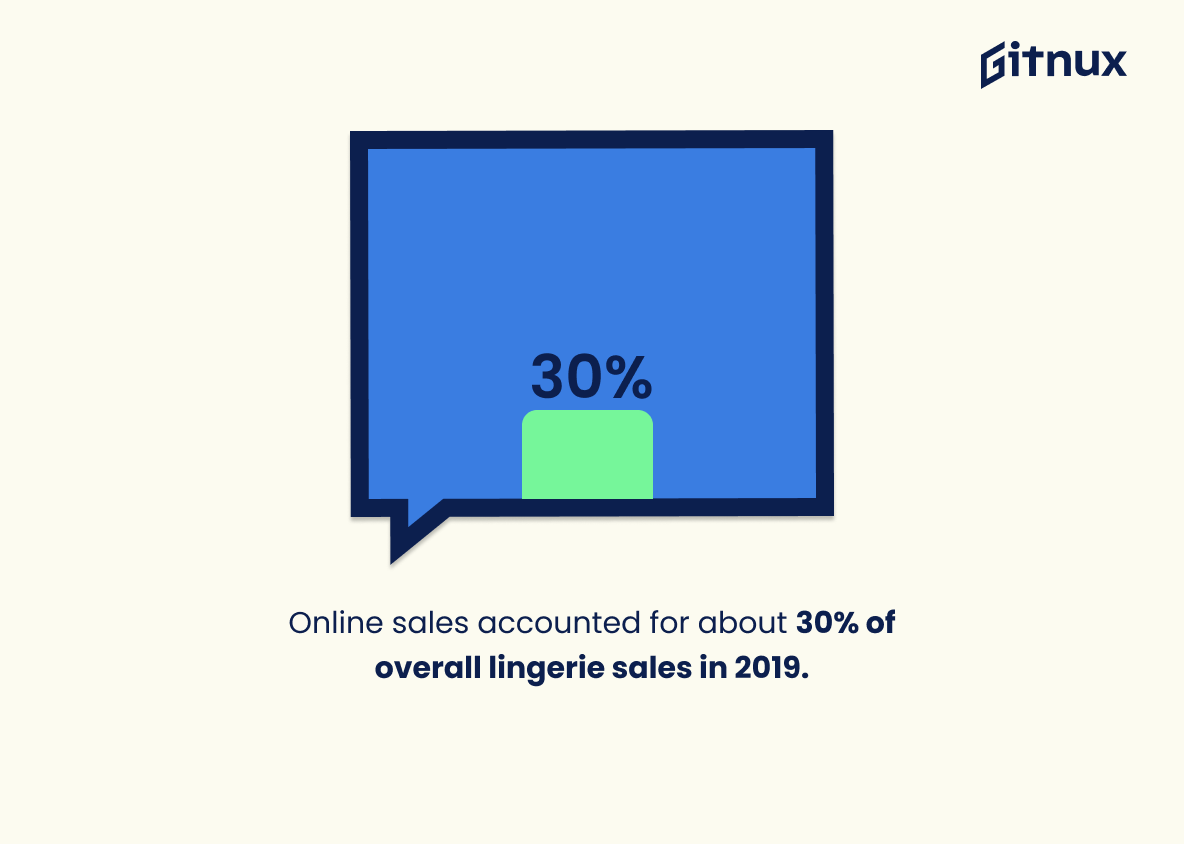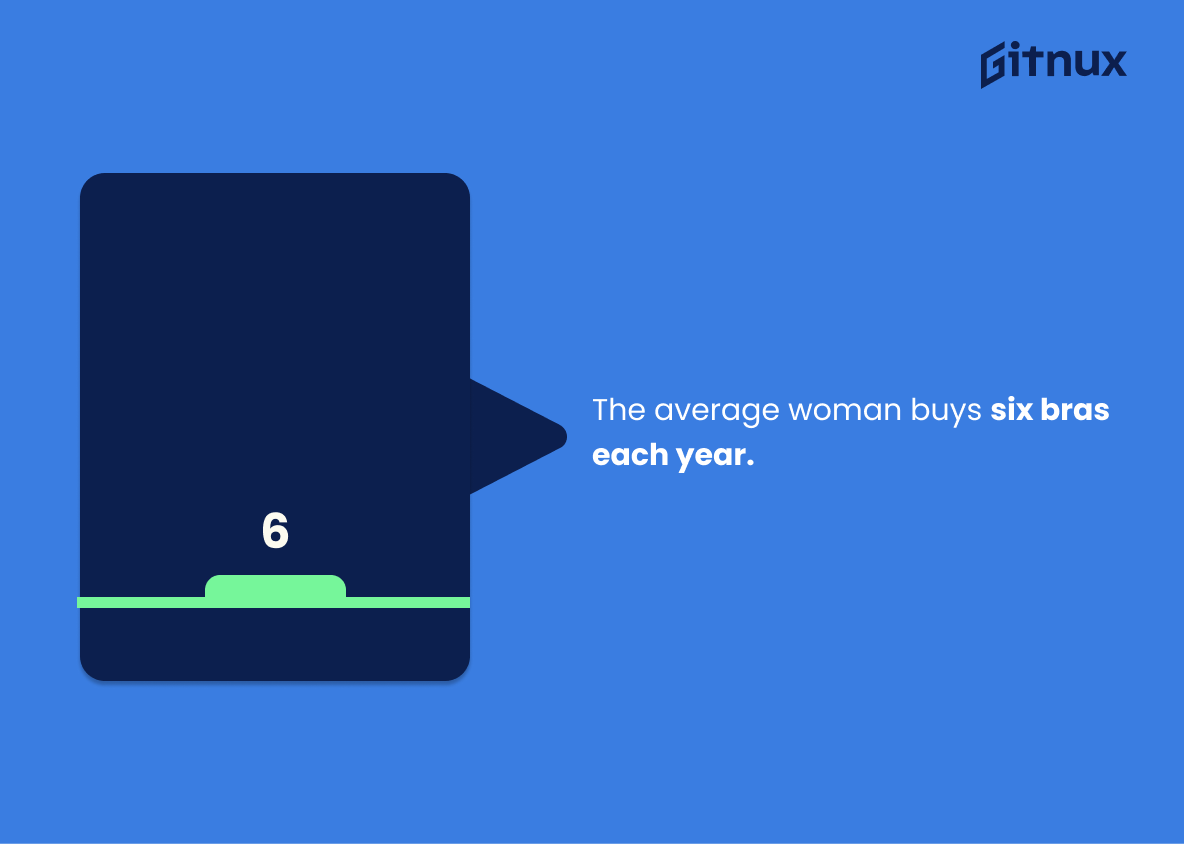The global bra market is a multi-billion dollar industry that has seen significant growth in recent years. According to Statista, the global bra market was valued at $16.5 billion in 2020 and is expected to reach around $34.5 billion by 2026. In 2021, the U.S women’s and girls’ apparel wholesale industry generated an estimated revenue of $252 million from brassieres alone while Asia-Pacific accounted for 36% of the total global revenue share in 2017 according to Grandview Research Inc..
In addition, 80% of women are wearing the wrong size bras as per Shape Magazine with 28%, 44%, 23%, 5% distribution among A cup, B cup C cup and D cups respectively according to Statista data on US Bra Cup Size Distribution . Furthermore 45 %of Bras sold happen through mass merchants while specialty stores account for 34%. The sports bra segment is predicted to grow at a CAGR of 13.6 percent during 2020 -2027 period as reported by Precedence research whereas Victoria’s Secret held 15 %market share with bras making up large portion sales back in 2014 (CNN Money). Moreover cotton dominated 38 %bra material market followed closely by synthetic fiber which accounts for 37%. Online sales accounted 30 percent overall lingerie sale 2019(Market Watch)while pushup bras segment will exhibit 4 9CAGR between 2019 – 2025 (Globe Newswire). On average woman buys 6bras each year(Salon magazine )and maternity brasegment anticipated reach 3 3billion 2026 (Acumen Research & Consulting ). Lastly retail sale womensbras China increased 11 7 2009 2010 reaching 21 22 billion about3 17billion SCMP Lifestyle Fashion Luxury article .
This statistic is a testament to the immense size and scope of the bra industry. It highlights the sheer magnitude of the market, and the potential for growth and development within it. It also serves as a reminder of the importance of the bra industry in the global economy, and the impact it has on the lives of millions of people around the world.
The worldwide bra market is expected to reach around $34.5 billion by 2026.
This statistic is a testament to the immense potential of the bra industry, indicating that it is a lucrative and growing market. It is a valuable insight for anyone interested in the bra industry, as it provides a glimpse into the future of the industry and the potential for growth. It is also a useful indicator of the overall health of the industry, as it shows that the demand for bras is increasing and that the industry is likely to remain profitable in the years to come.
Bra Industry Statistics Overview
The U.S. women’s and girls’ apparel wholesale industry generated $252.3 million in revenue from the sale of brassieres in 2021.
This statistic is a testament to the success of the U.S. women’s and girls’ apparel wholesale industry in 2021. It highlights the impressive revenue generated from the sale of brassieres, demonstrating the industry’s ability to remain profitable despite the challenges of the pandemic. This statistic is an important indicator of the health of the bra industry and provides valuable insight into the current state of the market.
80% of women are wearing the wrong bra size.
This statistic is a stark reminder of the importance of proper bra sizing. It highlights the need for more education and awareness about the importance of wearing the right size bra. It also speaks to the need for better sizing options and more accurate sizing information from bra manufacturers. This statistic is a call to action for the bra industry to make sure that women are wearing the right size bra for their body type.
Bra size distribution in the U.S. is around 28% for A-cup, 44% for B-cup, 23% for C-cup, and only 5% for D-cup and above.
This statistic is a telling indication of the preferences of the American consumer when it comes to bra sizes. It reveals that the majority of women in the U.S. prefer smaller cup sizes, with A-cup being the most popular. This information is important for businesses in the bra industry, as it can help them to better understand the needs and wants of their customers. It can also help them to tailor their products and services to better meet the demands of the market.
45% of Bras sold in the US happen through mass merchants while specialty stores account for 34%.
This statistic is a telling indication of the current state of the Bra industry. It reveals that mass merchants are dominating the market, while specialty stores are lagging behind. This information can be used to inform strategies for businesses in the Bra industry, as well as to provide insight into consumer preferences.
The revenue of sports bras is projected to reach US$4,747.8 Million in 2021.
This statistic is a testament to the growing importance of sports bras in the bra industry. It shows that the demand for sports bras is increasing, and that the industry is responding to this demand by investing in the production of more sports bras. This is a positive sign for the industry, as it indicates that the industry is adapting to the changing needs of consumers. Furthermore, this statistic highlights the potential for growth in the industry, as the revenue of sports bras is projected to increase in the coming years.
Victoria’s Secret held a 15.2% market share of the U.S. women’s intimates market in 2013, with bras making up a large portion of their sales.
This statistic is a testament to the success of Victoria’s Secret in the U.S. women’s intimates market, with bras making up a large portion of their sales. It is a clear indication that the company is a major player in the industry and has a significant influence on the market. This statistic is important to consider when discussing the overall state of the bra industry, as it provides insight into the success of one of the leading brands.
Asia-Pacific is the largest bra market, accounting for 36.5% of the global revenue share in 2017.
This statistic is a testament to the immense potential of the Asia-Pacific region in the bra industry. It highlights the fact that the region is a major player in the global bra market, and that businesses should consider investing in the region to capitalize on its growth. Furthermore, it serves as a reminder that the Asia-Pacific region is a key market for bra manufacturers and retailers, and should not be overlooked.
In 2021, the average price of a bra is estimated to be approximately $47.70.
This statistic is a telling indication of the current state of the bra industry. It provides insight into the average cost of a bra, which can be used to compare the prices of different brands and styles. Additionally, it can be used to gauge the overall trend of the industry, as well as the potential for growth or decline in the future. Ultimately, this statistic is an important piece of the puzzle when it comes to understanding the bra industry.
Wireless bras held the highest market share, accounting for over 58% of the global revenue in 2021.
This statistic is a testament to the fact that wireless bras have become the go-to choice for many women, accounting for the majority of the global revenue in 2021. It speaks to the popularity of wireless bras and their ability to provide comfort and support without the need for traditional underwire. This statistic is a clear indication that the bra industry is evolving to meet the needs of modern women.
The sports bra market is predicted to grow at a CAGR of 13.6% during the 2020-2027 period.
This statistic is a testament to the increasing demand for sports bras, indicating that the market is likely to experience significant growth in the coming years. This is an important piece of information for anyone interested in the bra industry, as it provides insight into the potential for success in the sports bra market.
Cotton dominated the bra market by material, with a share of 38.7% in 2018.
This statistic is a telling indication of the current state of the bra market, demonstrating that cotton is the most popular material used in the production of bras. This is significant as it provides insight into the preferences of consumers, and can be used to inform decisions about the types of bras that should be produced in the future.
Online sales accounted for about 30% of overall lingerie sales in 2019.
This statistic is a telling indication of the power of online shopping in the lingerie industry. It shows that the digital space is a major player in the market, and that businesses need to be aware of the potential of online sales in order to remain competitive. Furthermore, it highlights the importance of having an effective online presence in order to maximize sales.
The push-up bras segment is expected to exhibit a CAGR of 4.9% from 2019 to 2025.
This statistic is indicative of the potential growth of the push-up bras segment in the bra industry, suggesting that this particular segment is likely to experience a steady increase in demand over the next few years. This could be a great opportunity for businesses to capitalize on the growing popularity of push-up bras and capitalize on the potential profits that could be made from this segment.
The average woman buys six bras each year.
This statistic is a telling indication of the size of the bra industry. It shows that the average woman is buying a significant number of bras each year, which means that the industry is likely to be a profitable one. This statistic is also important in terms of understanding the needs of women when it comes to bras, as it shows that they are likely to be buying new bras on a regular basis.
Asia-Pacific will exhibit the fastest CAGR, 6.1%, in the bra market during the forecast period (2018-2025).
This statistic is a testament to the potential of the Asia-Pacific region in the bra market. It indicates that the region is likely to experience the highest growth rate in the industry, making it an attractive destination for investors and entrepreneurs. This could lead to increased competition and innovation in the bra market, resulting in better products and services for consumers. Furthermore, it could also lead to more job opportunities in the region, providing a boost to the local economy.
Europe accounts for the second-largest market, holding 27.4% of the revenue share in the bra market as of 2017.
This statistic is a testament to the fact that Europe is a major player in the bra market, accounting for a significant portion of the revenue share. It is a clear indication that the bra industry is thriving in Europe, and that it is an important market for bra manufacturers and retailers. This statistic is important for anyone looking to gain insight into the bra industry, as it provides a valuable snapshot of the industry’s current state.
The maternity bra segment is anticipated to reach $3.3 billion by 2026.
This statistic is indicative of the growing demand for maternity bras, which is a testament to the booming bra industry. It shows that the industry is continuing to expand and evolve to meet the needs of its customers, and that the maternity bra segment is a key part of that growth. This statistic is a clear indication that the bra industry is thriving and is likely to remain a major player in the fashion industry for years to come.
Retail sales of women’s bras in China increased by 11.7% from 2009 to 2010, reaching ¥21.22 billion (about $3.17 billion).
This statistic is a testament to the growing demand for women’s bras in China, indicating that the bra industry is thriving in the country. It also shows that the industry is becoming increasingly profitable, with sales increasing by 11.7% in just one year. This is an important statistic for anyone interested in the bra industry, as it provides insight into the current state of the market and its potential for growth.
Conclusion
The global bra market is a rapidly growing industry, with the worldwide market value expected to reach around $34.5 billion by 2026 and U.S. women’s and girls’ apparel wholesale industry generating $252.3 million in revenue from the sale of brassieres in 2021 alone. The majority of bras sold are A-cup or B-cup sizes, while D-cups and above make up only 5% of sales; however, 80% of women wear an incorrect size due to lack of knowledge about proper sizing techniques. Victoria’s Secret held 15.2% share in 2013 for their large portion made up by bras sales, but mass merchants still account for 45%. Sports bras have seen significant growth over recent years as well – projected to reach US$4,747 Million this year – along with wireless styles which hold 58% market share globally today compared to wired styles at 42%. Cotton remains the most popular material used when making these garments accounting for 38%, followed closely behind by synthetic materials such as polyester (35%). Online retail has also become increasingly popular among consumers since 2019 where it accounts for 30% lingerie purchases overall; whereas specialty stores remain 34%, department stores 24%, discount retailers 7%, catalog/mail order 4%. Finally maternity bra segment is anticipated to be worth $3 billion dollars come 2026 showing that there will always be demand no matter what stage you’re at.
References
0. – https://www.globenewswire.com
1. – https://www.marketwatch.com
2. – https://www.shape.com
3. – https://www.salon.com
4. – https://www.prnewswire.com
5. – https://www.grandviewresearch.com
6. – https://www.money.cnn.com
7. – https://www.acumenresearchandconsulting.com
8. – https://www.scmp.com
9. – https://www.statista.com
10. – https://www.researchandmarkets.com
11. – https://www.precedenceresearch.com


